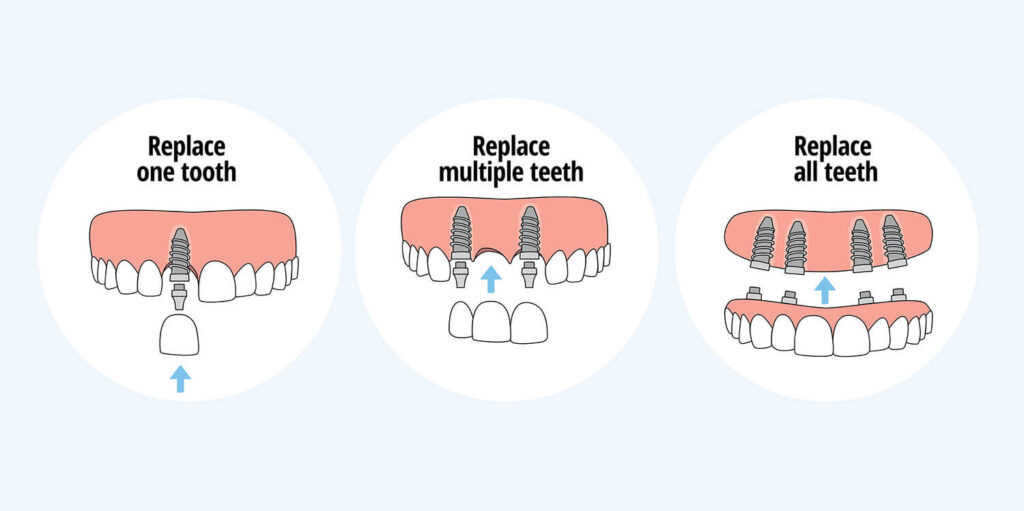Oral Surgery
From Extractions to Implants
Trust Our Experts for Your Oral Surgery Needs
Oral surgery addresses issues and defects in the mouth, jaw, or facial structure through various procedures, from tooth extractions to implant placements. At Dixie Dental Family and Cosmetic Dentistry, our skilled specialists are trained to handle these procedures safely and effectively. If you have concerns about your oral or facial health, consult our team in St. George, UT, to determine if surgery is right for you. Call us today to schedule an appointment!
Tooth and Wisdom Tooth Extractions
Tooth extraction involves removing a tooth from its socket in the jawbone for various reasons, including advanced tooth decay, gum disease, fractures, or impacted wisdom teeth. If decay is too severe for restoration, extraction becomes necessary to restore oral health. Other scenarios, like advanced gum disease or fractured teeth, might also require extraction. Wisdom teeth are often extracted if they are impacted and unable to erupt properly, potentially causing pain and other dental issues.
The extraction process begins with numbing the area with a local anesthetic. For simple extractions, the tooth is easily visible and accessible, while surgical extraction is needed for impacted or hard-to-reach teeth. The procedure involves making an incision to expose the tooth and bone, removing the tooth with special tools, and possibly modifying the bone. After removal, the wound is cleaned, packed, and sutured. Post-operative care includes managing swelling and discomfort, typically with ice, pain medication, and rest.
Durable Replacements
Dental Implants
Dental implants are titanium artificial tooth restorations that fuse with your jawbone, offering a natural-looking and feeling replacement for single teeth or dental bridges, enabling you to eat, smile, and live confidently.
Preparing for Implants
Our team will assess your oral health and suitability, create a personalized treatment plan, and use our 3D cone beam scanner to plan implant placement.
The Process
The implant procedure involves placing a titanium implant into your jawbone, then attaching a replacement tooth or bridge after three to four months, with ongoing care needed for durability.
Implant Types
Single dental implants use a post, abutment, and crown to replace missing teeth, while an implant-supported bridge replaces multiple teeth, preserving natural ones.
Request an Appointment
Convenient Online Scheduling Available
Easily schedule your next dental appointment with us. Whether you need a routine check-up, emergency care, or a cosmetic consultation, our convenient online booking system makes it simple to find a time that works for you. Click here to book your visit and keep your smile in top shape!



